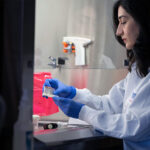Stetson travels from Texas for bladder exstrophy care
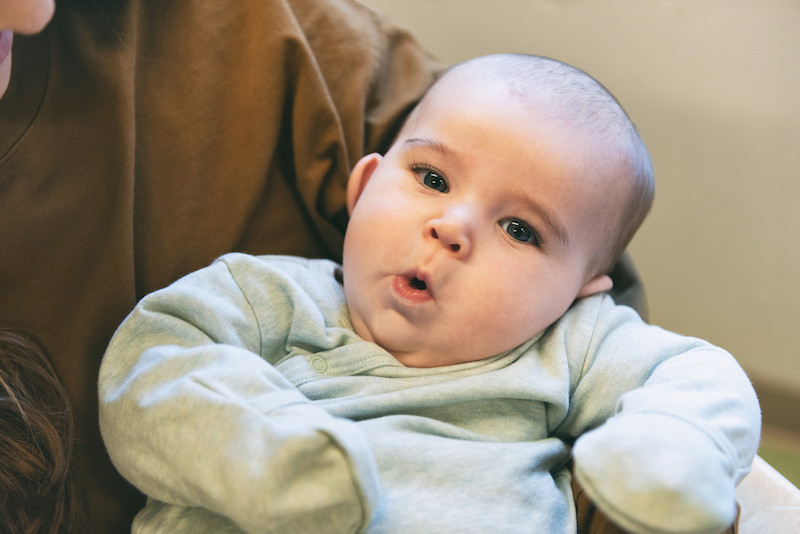
As first-time parents, Rachael and Leroy Calk expected to have questions after their son, Stetson, was born. What they didn’t expect was to find themselves faced with a surprising diagnosis when their baby was just a few hours old — and to begin a journey for answers about his care.
Although Rachael’s pregnancy had been typical, as soon as Stetson was born last July, it was clear that something didn’t look right. Nurses whisked him away to be examined by a neonatologist, who recommended he travel by ambulance to a larger hospital in San Antonio, about an hour away from their Texas home. “I got to hold him for 30 minutes,” remembers Rachael, who was still recovering from the delivery. “And then he was gone.”
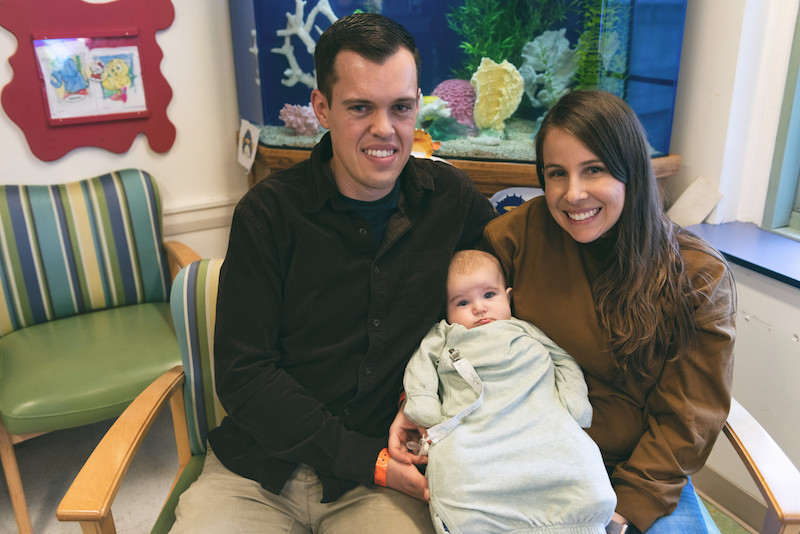
A diagnosis of bladder exstrophy
When Rachael was able to join her husband and son in San Antonio, they learned Stetson’s diagnosis: bladder exstrophy. In this rare, complex condition, the abdominal wall and underlying organs sometimes do not fuse properly when a baby is in the womb, causing them to be born with their bladder inside out and exposed on the outside of the body. Although babies with bladder exstrophy are typically otherwise healthy, the disorder can affect the urinary, reproductive, and intestinal tracts and musculoskeletal system and requires surgical treatment and ongoing care.
But that wasn’t entirely clear to the Calks. “The doctors told us to come back in two weeks and that they would discuss the details of the surgery then,” says Leroy. “They warned us not to get online and do our own research because it would seem too scary.”
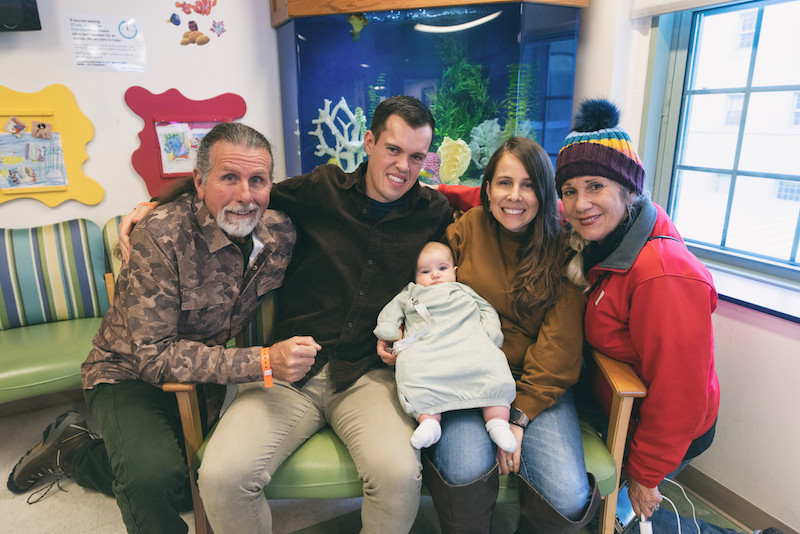
‘We knew this was the right place’
Like many worried parents, however, Leroy couldn’t resist the siren call of Google. Through his exhaustive research, he learned that bladder exstrophy repair is a complicated procedure that requires deep expertise and skill. After joining a few related Facebook groups, the Calks found that the Bladder Exstrophy Program at Boston Children’s Hospital was one of other families’ top recommendations for care. They reached out to the program, along with a few other hospitals.
“As soon as we spoke with the team at Boston Children’s, we knew this was the right place,” says Leroy. He and Rachael spent more than 90 minutes on the phone with the program’s director, Dr. Joseph Borer, nurse practitioner Lauren Cullen, and registered nurse Rosemary Grant. Along with details about the condition and treatment plan, the clinicians offered reassurance, too.
“Dr. Borer asked me if I had given Stetson a bath yet — I thought I wasn’t supposed to,” says Rachael. “He made sure we knew it was okay to bathe our baby. That really stood out to me as a mom.”
Once the decision was made to come to Boston, “everything fell into place,” says Rachael. But that didn’t mean that the experience was easy. “It was so traumatic to have Stetson taken away right after he was born that it was hard for me to hand him again over for surgery,” she admits. “Dr. Borer just held my hand and told me it was going to be okay. We knew we were doing the right thing.”
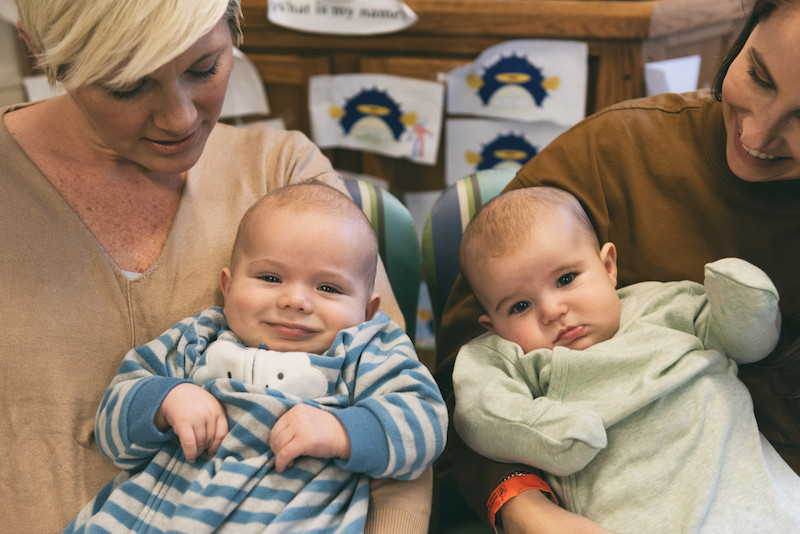
A lasting bond
The procedure was a success, and Stetson and his family settled into inpatient life as they waited for him to recover. While in the hospital, they discovered that another baby just a month younger than Stetson was also recovering from bladder exstrophy repair there. “We learned that they wanted to meet if it was okay with us,” says Rachael. That meeting — with Henry Packer and his parents, Tawni and Andrew — has led to a friendship and bond that few other families can understand.
While Stetson is the Calks’ first child, the Packers have three other kids in addition to Henry. “We each bring a different perspective,” says Rachael. “Tawni is able to offer insight and advice, like the best stroller to buy to accommodate Stetson’s cast [which helps his body heal after surgery].” The families have scheduled appointments together and plan to keep in touch throughout their sons’ ongoing bladder exstrophy journeys.
As for Stetson, he loves Disney songs, turning the pages as his parents read to him, and “chewing on his hands — he loves his hands,” laughs Rachael. “For what he’s been through, he’s just a really calm, happy baby.”
Learn about the Bladder Exstrophy Program and read Henry’s story here.
Related Posts :
-

Parsing the promise of inosine for neurogenic bladder
Spinal cord damage — whether from traumatic injury or conditions such as spina bifida — can have a profound impact on bladder ...
-

Modeling urinary tract disorders on a chip: Zohreh Izadifar
When a new tissue sample arrives from the Department of Urology, the Boston Children’s Hospital lab of Zohreh Izadifar, ...
-

Helping manage ‘sensitive issues’: How our psychosocial team helps kids with urologic concerns
In Boston Children’s Department of Urology, urologists, pediatricians, and nurses aren’t the only ones who care for kids ...
-

Making a change: After a second opinion for spina bifida care, Sydney is thriving
At almost 10 years old, Sydney MacKay is sassy, spunky, and wants to be as independent as possible. Because she was ...



